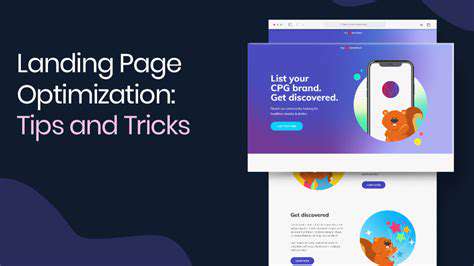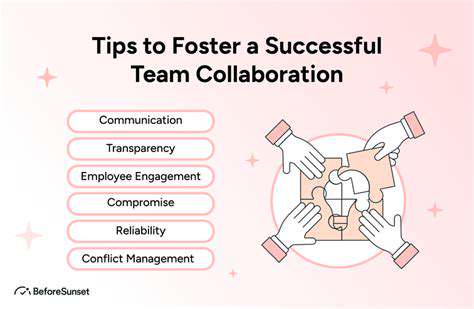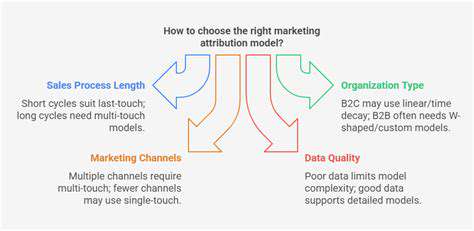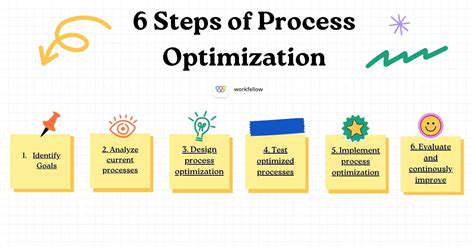Crafting a Winning Digital Marketing Funnel

Improving User Experience
Landing pages that convert well don't happen by accident. They're the result of careful planning and execution. The difference between a high-converting page and a mediocre one often comes down to how visitors feel when they arrive. When people land on your page, they should immediately understand what you're offering and why it matters to them.
Visual hierarchy plays a critical role here. Important elements like headlines and calls-to-action should stand out naturally. White space isn't empty space - it's a powerful design tool that helps guide visitors' attention. Every pixel on your page should serve a purpose, either directing attention or providing value.
Optimizing for Conversions
Conversion optimization is both an art and a science. The placement, color, and wording of your call-to-action buttons can dramatically impact results. Buttons that convert best often use action-oriented language that creates urgency. Instead of generic Submit buttons, try specific phrases like Get My Free Consultation or Start My 30-Day Trial.
Form design deserves special attention. Each additional field reduces completion rates, so only ask for essential information. Smart forms that adapt based on user input can maintain data quality while reducing friction. For example, a phone number field might only appear after selecting Request Call Back as the preferred contact method.
Technical SEO and Analytics
Search engine optimization isn't just for blog content. Landing pages need SEO love too, especially when they're targeting specific commercial intent keywords. Page speed affects both SEO rankings and conversion rates, so optimize images and minimize render-blocking resources.
Analytics should inform every optimization decision. Heatmaps show where visitors look and click, while session recordings reveal how they navigate your page. The most valuable insights often come from seeing where people hesitate or abandon the page. These behavioral clues point directly to problems that need fixing.
Analyzing and Refining Your Funnel: Continuous Optimization for Growth
Understanding Your Current Funnel Performance
Funnel analysis starts with mapping the complete customer journey. Look beyond basic conversion rates to understand the story behind the numbers. For example, if mobile users convert at half the rate of desktop users, that points to a responsive design issue rather than a general conversion problem.
Segmentation reveals hidden opportunities. Compare behavior by traffic source, device type, and visitor characteristics. Sometimes the biggest wins come from optimizing for your best-converting segments rather than trying to fix underperforming ones.
Identifying Bottlenecks and Areas for Improvement
Bottlenecks often hide in unexpected places. A checkout page might seem fine, but if 30% of users abandon when asked for a phone number, that's a clear signal. The most effective optimizations address real user objections rather than hypothetical ones.
Exit surveys and live chat transcripts provide qualitative insights to complement quantitative data. When users explain in their own words why they didn't convert, you gain perspective no analytics dashboard can provide.
Refining Messaging and Calls to Action
Message refinement never ends. What worked last quarter might not resonate today. The best performing copy speaks directly to customers' current needs and concerns. Regular A/B testing ensures your messaging stays relevant.
Psychological triggers can boost conversions when used ethically. Scarcity (Only 3 spots left), social proof (Join 10,000+ satisfied customers), and reciprocity (Free guide included) all influence decision-making when applied appropriately.
Implementing and Monitoring Key Changes
Implementation requires careful planning. Changes should be rolled out systematically with proper tracking in place. Never make multiple significant changes simultaneously - you won't know which one drove the results.
Establish a regular review cadence. Weekly check-ins on key metrics help catch issues early, while quarterly deep dives reveal larger trends. The most successful companies treat optimization as an ongoing process, not a one-time project.
Read more about Crafting a Winning Digital Marketing Funnel
Hot Recommendations
- Senior Travel Discounts and Deals
- Personalized Travel for Different Seasons and Climates
- Honeymoon Destinations: Romantic Getaways for Newlyweds
- Mythical Places: Journeys to Legendary Locales
- The Future of Travel Agents in an Automated World
- Sustainable Design for Tourist Infrastructure
- Combatting Illegal Wildlife Trade Through Travel Awareness
- The Best Beaches for Relaxation and Sunbathing
- Marine Conservation: Diving into Responsible Ocean Travel
- Measuring the Social Impact of Tourism


